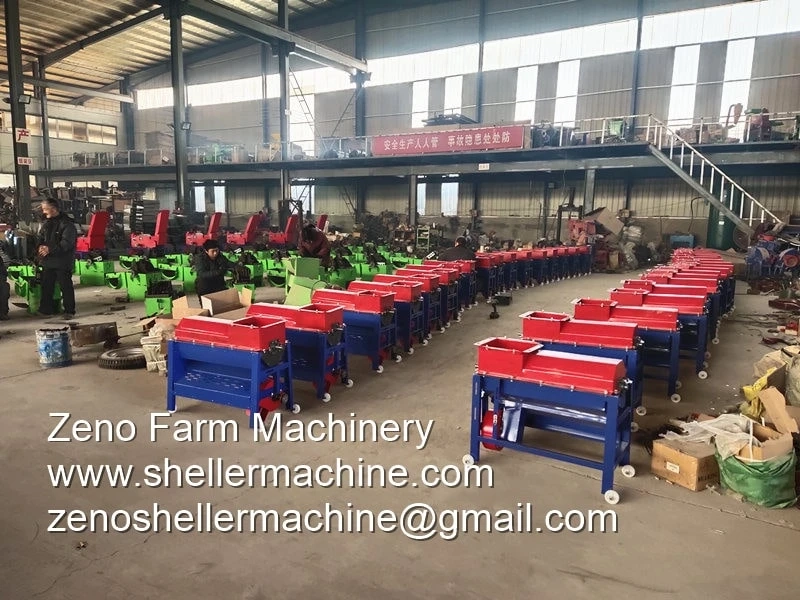A pole, called a reach, connected the front gear to the rear. The reach was usually a 2-by-4-inch piece of white oak with a hole at the front for the king bolt, and a series of holes about two-thirds of the way back for the reach bolt. Steel plates reinforced the reach at wear points, such as at the king and reach bolts and the surfaces that rub on the sway bar as the front gear is steered. By removing the reach bolt and sliding the rear gear forward or backward on the reach, the length of the wagon gear could be adjusted to accommodate beds of different lengths.It can be used to transport grain after multi grain thresher machine.
Farm wagons usually had a drop tongue that was hinged between the front hounds on a long bolt (the queen bolt) so the tongue point could move vertically. An optional stiff or slip tongue could be furnished that mounted in fixed sockets without a hinge. A drop tongue required the use of a neck yoke to support the point, while chains from the hames to the point were generally used with a stiff tongue.
Brakes were desirable on wagons used on roads or in hilly country. Wagon brakes consisted of a horizontal brake bar suspended from the gear just ahead of the rear wheels. A large, wooden, concave-shaped block at each end of the brake bar was forced against the tire of each rear wheel by a lever, creating enough friction to slow and stop the wagon. When a standard wagon box was mounted, a brake lever mounted on the side of the box near the front was connected to the brake gear lever by a long rod.
Most wagon gears were painted bright red, although orange and yellow were also used. Wheel rims, spokes, axles, reaches and just about every other part were enhanced by blue, black and white striping, usually applied by hand.
That pretty much takes care of the wagon’s running gear, so we’ll talk a little about beds. Although there were many different beds for many different hauling tasks, we’ll look at the two most commonly found on farms: grain boxes and hayracks. They were built so one could be easily lifted off the running gear and the other put on, allowing a single wagon gear to be used with a hayrack during haying season and a grain box during the rest of the year.
The wooden grain box, probably the most popular and versatile bed for farm use, was used to haul loose grain, milk cans, cattle, sacks, bales and boxes, fertilizer and lime, coal and firewood, lumber and fencing. It carried the family to town on Saturday and church on Sunday.
The standard wagon box for an auto-track wagon was 38 inches wide by 10 feet, 6 inches long by 20 inches deep. Wide-track wagon boxes were the same length, but 42 inches wide. To provide more capacity (and standard on most boxes) a second box of the same size was added on top of the main box, making a double-box wagon. An optional third (or tip-top box) of 9- or 11-inch depth could be added as well, making a triple-box wagon. The second and third boxes had no bottoms and were just the sideboards and end gates with the necessary hardware for attaching.
Solid construction ensured durability
illustration of a green grain bed with yellow wheels
Image courtesy of Sam Moore
A Piedmont wagon with a two-box grain bed. Piedmont was one of the few manufacturers to paint their wagon gears anything but red.
Each side of a wagon grain box was made of a single, wide board. The floor was made of tongue-and-groove boards, doubled where the box rested on the running gear bolsters. Cross sills on the bottom of the box provided strength and support for the box floor, while the two center sills extended out beyond the box to support the toe boards and side braces.
Box hold-down straps were riveted to the bottom box sides and bolted through the sills. Wear plates were riveted to the sides where the bolster stakes rubbed, and heavy concave rub irons protected the bottom corner of the box from damage by the front wheels when turning.
Staples on the outside of the bottom box sides held wooden cleats that secured the second box in place. Edge irons protected the top edge of the sideboards and, along with the angle iron grain cleats of the upper boxes and the tongue and groove floor, made the box grain-tight.
The lower rear end gate was hinged in the middle and could be easily removed for dumping. An extended shovel or scoop board was sometimes provided at the rear so the load could be more easily shoveled off.
0


